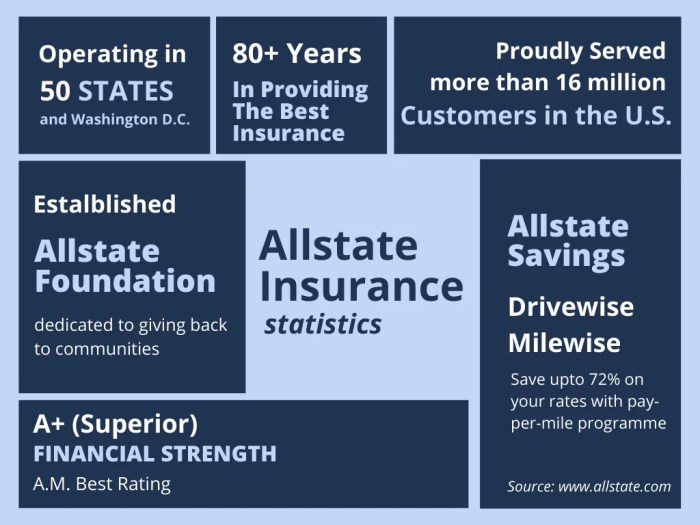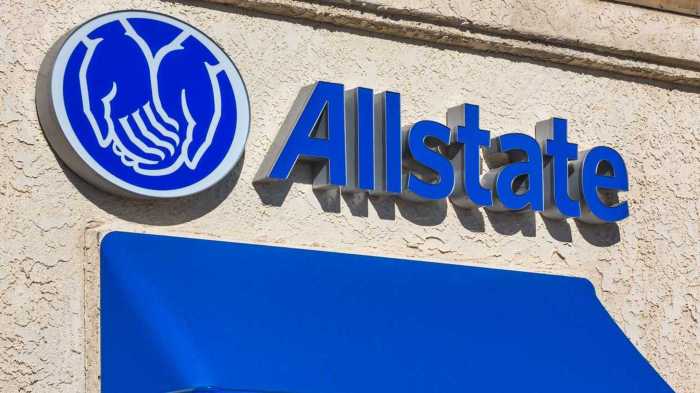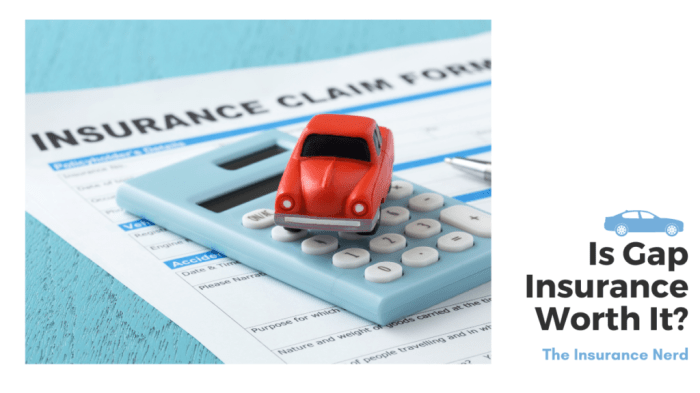Cost of gap insurance Allstate is a crucial consideration for anyone financing a vehicle. Understanding the factors influencing these premiums and the various policy options offered by Allstate is key to making an informed decision. This guide delves into the nuances of Allstate gap insurance, examining different policy types, coverage details, and comparison with other insurers.
The cost of gap insurance varies significantly based on vehicle specifics, loan terms, and the chosen policy. This detailed exploration will illuminate these aspects, helping you navigate the complexities of gap insurance and determine the optimal coverage for your situation.
Introduction to Gap Insurance

Source: agencyheight.com
Gap insurance is a crucial component of auto financing that protects you from financial loss if your vehicle’s value depreciates below the amount you owe on the loan. Essentially, it bridges the “gap” between the actual value of your car and the outstanding loan balance in case of a total loss or a significant accident. This coverage is particularly relevant for car loans because the loan amount often exceeds the market value of the car, leaving you liable for the difference.Understanding how gap insurance works, specifically in the context of car loans, is essential.
When you finance a car, the lender typically insures the vehicle to protect their investment. However, if your car is totaled in an accident, the insurance payout might not fully cover the outstanding loan balance. This is where gap insurance steps in, ensuring you don’t have to personally pay the difference between the payout and the loan amount.
This coverage helps protect you from a potential financial burden.
Types of Gap Insurance Policies
Gap insurance policies generally fall into categories based on the coverage they offer. Different policies cater to various needs and circumstances, ensuring the customer is adequately protected. Understanding the nuances of each policy is crucial in selecting the most appropriate one.
Comparison of Gap Insurance Types
| Type | Coverage | Description |
|---|---|---|
| Comprehensive Gap Insurance | Covers the difference between the vehicle’s depreciated value and the outstanding loan amount in case of any loss, including theft or damage not covered by the standard insurance policy. | This is a broad type of coverage, typically including all scenarios where the vehicle is no longer usable or repairable. A comprehensive policy often provides the most comprehensive protection. |
| Collision Gap Insurance | Covers the difference between the vehicle’s depreciated value and the outstanding loan amount if the damage is caused by a collision. | This policy is tailored to specific circumstances of a collision and only covers the losses incurred due to a collision with another vehicle or object. It often provides a more targeted approach. |
| Loan-Specific Gap Insurance | Specifically covers the difference between the car’s value and the loan amount, typically included in a loan agreement or purchased separately. | This type of gap insurance is closely tied to the loan agreement and may have specific terms related to the car’s depreciated value, or the length of the loan. |
Gap insurance options vary significantly, offering different degrees of protection. The specific type of gap insurance you choose will depend on your financial needs and risk tolerance. Carefully considering the different types of gap insurance will help you make an informed decision about your coverage.
Allstate Gap Insurance Policies

Source: motor1.com
Allstate offers various gap insurance plans to protect consumers from financial loss if the value of their vehicle depreciates significantly after purchasing. Understanding these plans and the factors influencing their cost is crucial for informed decision-making. This section details the different Allstate gap insurance policies, including their coverage limits, exclusions, and associated costs.
Allstate Gap Insurance Plans
Allstate provides a range of gap insurance options tailored to different needs and budgets. These plans are designed to cover the difference between the vehicle’s loan amount and its market value if the vehicle is totaled or stolen. The specific plan selected will depend on the vehicle’s make, model, and year, along with the terms of the financing agreement.
Factors Influencing Allstate Gap Insurance Costs
Several factors impact the cost of Allstate gap insurance. The purchase price of the vehicle, the loan amount, and the terms of the financing agreement all play a significant role. Additionally, the type of vehicle and its expected depreciation rate can affect the premium. For example, a new luxury vehicle with a higher loan-to-value ratio may have a higher premium than a used, more affordable model.
Coverage Limits and Exclusions
Allstate gap insurance policies typically cover the difference between the vehicle’s loan amount and its actual cash value (ACV) in the event of a total loss or theft. The policy will specify the conditions under which coverage applies, and some policies might exclude certain types of damage, such as those caused by wear and tear, or damage from normal use.
Coverage limits vary by policy, and it’s essential to review the specific policy details for comprehensive understanding.
Allstate Gap Insurance Policy Options
| Policy Option | Features | Benefits | Estimated Costs (USD) |
|---|---|---|---|
| Basic Gap Insurance | Covers the gap between the vehicle’s loan amount and its market value in case of a total loss or theft. | Provides basic protection against financial loss. | $50 – $150 per year |
| Enhanced Gap Insurance | Covers the gap, but may include additional protections, like extended coverage for specific repairs. | Offers more comprehensive protection, possibly covering repairs not directly related to a total loss. | $100 – $300 per year |
| Comprehensive Gap Insurance | Covers the gap and extends coverage to various situations, including partial damage, or specific repair scenarios. | Provides extensive coverage for various circumstances and potential losses. | $150 – $500 per year |
Note: Estimated costs are approximate and may vary based on individual circumstances and policy terms. It’s crucial to review the specific policy details for precise pricing and coverage specifics.
Factors Affecting Gap Insurance Premiums
Gap insurance premiums are influenced by a variety of factors, making it crucial to understand how these elements affect the final cost. A thorough understanding of these factors allows consumers to make informed decisions when comparing policies and budgeting for this type of coverage.
Vehicle Make, Model, and Year
The vehicle’s make, model, and year significantly impact the gap insurance premium. Vehicles with higher market values, often associated with luxury brands or high-demand models, tend to have higher premiums. This is because the gap amount, the difference between the loan amount and the vehicle’s depreciated value, is likely to be larger for these vehicles. Older vehicles generally have higher premiums as well, because their depreciated value is more likely to be significantly lower than their original purchase price.
Vehicle Type
Different vehicle types can influence gap insurance costs. Generally, new cars have lower premiums than used cars. This is because the depreciated value of a new car is less likely to exceed the loan amount. Luxury vehicles, due to their higher initial price points and often rapid depreciation rates, typically have higher gap insurance premiums compared to more standard models.
Used vehicles, on the other hand, may have premiums that vary widely, depending on their specific condition, model, and mileage.
Loan Terms, Cost of gap insurance allstate
Loan terms, including the loan amount and duration, are a critical factor in determining the cost of gap insurance. The gap insurance premium is often directly related to the loan amount. A larger loan amount implies a larger potential gap, and thus, a higher premium. Similarly, a longer loan duration will typically lead to a higher premium as the loan amount is carried over for a longer period.
Relationship Between Loan Terms and Gap Insurance Cost
| Loan Amount | Loan Duration (years) | Estimated Gap Insurance Premium (per year) |
|---|---|---|
| $20,000 | 3 | $150-$250 |
| $30,000 | 5 | $200-$350 |
| $40,000 | 7 | $250-$450 |
| $50,000 | 7 | $300-$550 |
Note: These are estimated ranges. Actual premiums may vary based on other factors.
Comparison with Other Insurance Providers: Cost Of Gap Insurance Allstate
Comparing Allstate’s gap insurance costs with those of other major insurers reveals a varied landscape. Factors such as specific policy terms, coverage amounts, and the make and model of the vehicle influence premium pricing. Understanding these nuances is crucial for consumers seeking the most cost-effective gap insurance.
Pricing Variations Across Insurers
Different insurance companies employ varying pricing models for gap insurance. Some insurers might base premiums on the vehicle’s manufacturer and model, reflecting potential variations in repair costs. Others may use a more generalized approach, factoring in factors such as the vehicle’s age, mileage, and the amount of coverage desired. This leads to different pricing structures for similar policies. For instance, a policy covering a newer luxury vehicle might cost more than one covering a slightly older, less expensive vehicle, even if the coverage amount is identical.
Features and Benefits of Competing Policies
Numerous insurance companies offer gap insurance policies alongside their primary auto insurance products. Some providers may include comprehensive coverage options that extend beyond the typical gap insurance, providing additional protection against other potential financial losses. Others may offer tailored policies with specific discounts or incentives, such as bundled packages that include additional services or warranties. The availability and specifics of these extra benefits are crucial to consider when comparing policies.
Comparative Analysis Table
The following table provides a comparative overview of Allstate’s gap insurance against policies from other major insurers, highlighting their respective premiums and coverage details. It’s important to remember that these figures are illustrative and may vary depending on individual circumstances.
| Insurance Provider | Premium (Estimated) | Coverage Details | Additional Features |
|---|---|---|---|
| Allstate | $100 – $300 per year | Covers the difference between the vehicle’s actual cash value and the outstanding loan amount. Typically includes a deductible. | May offer discounts for bundled policies. |
| State Farm | $90 – $250 per year | Covers the difference between the vehicle’s actual cash value and the outstanding loan amount. Includes a deductible and options for higher coverage amounts. | May include roadside assistance or other add-on benefits. |
| Progressive | $85 – $275 per year | Covers the difference between the vehicle’s actual cash value and the outstanding loan amount. Offers various coverage levels and options. | May offer discounts for safe driving records. |
| Geico | $95 – $280 per year | Covers the difference between the vehicle’s actual cash value and the outstanding loan amount. May have options for higher coverage limits. | Often includes digital tools for managing policies. |
Coverage Examples and Scenarios
Understanding how Allstate gap insurance applies in various situations is crucial for making informed decisions. This section provides illustrative examples, highlighting when gap insurance is advantageous and when it might not be necessary. This clarity will help you assess the coverage’s potential value for your specific needs.Gap insurance, in essence, bridges the difference between the actual cash value of your vehicle and its outstanding loan balance.
This difference, often referred to as the gap, is covered by the insurance in the event of a total loss or substantial damage to your vehicle.
Vehicle Damage Scenarios
Gap insurance plays a significant role when a vehicle suffers damage beyond repair. The coverage kicks in when the vehicle’s repair costs exceed its market value, a situation often triggered by significant accidents or natural disasters. For example, a car involved in a major collision might incur repair costs surpassing its pre-accident value. In such cases, gap insurance will pay the difference between the repair costs and the car’s current market value.
Total Loss Scenarios
Total loss situations are another prime example of when gap insurance becomes particularly valuable. When a vehicle is deemed a total loss, it is considered beyond economical repair. In these cases, the insurance settlement might not fully cover the outstanding loan balance. Gap insurance, therefore, compensates for the gap between the settlement and the outstanding loan. For instance, if a flood completely destroys a vehicle and the insurance settlement only covers a portion of the loan, gap insurance would cover the remaining amount.
Situations Where Gap Insurance is Beneficial
Gap insurance is a valuable asset in situations where the vehicle’s value depreciates significantly. This depreciation could be due to factors like accidents, natural disasters, or high mileage. This insurance can be particularly beneficial when the vehicle’s repair costs or total loss settlement value fall below the outstanding loan amount. Examples include a vehicle involved in a collision that is declared a total loss, resulting in a lower insurance settlement than the outstanding loan amount.
Situations Where Gap Insurance Might Not Be Necessary
Gap insurance may not be essential in scenarios where the vehicle’s value remains above the outstanding loan amount. For example, if the vehicle sustains damage but the repair costs remain below its market value, or if the total loss settlement covers the full outstanding loan balance, gap insurance may not be required. A relatively minor accident resulting in repair costs below the car’s market value illustrates this scenario.
Scenario Illustration Table
| Scenario | Vehicle Condition | Insurance Settlement | Loan Balance | Gap Insurance Application |
|---|---|---|---|---|
| Major Collision (Total Loss) | Severely damaged, beyond repair | Lower than loan balance | High | Gap insurance pays the difference between the settlement and loan balance. |
| Minor Accident | Repairable damage | Higher than repair costs | Low | Gap insurance not necessary as settlement covers the loan. |
| Flood Damage (Total Loss) | Completely submerged | Lower than loan balance | High | Gap insurance covers the difference between the settlement and loan balance. |
| Normal Wear and Tear | Minor damage | Equal to or higher than loan balance | Low | Gap insurance not necessary as settlement covers the loan. |
Customer Service and Claims Process

Source: theinsurancenerd.com
Navigating the claims process for gap insurance can sometimes feel complex. Understanding the steps involved and typical timelines can ease your mind and help you feel more prepared. Allstate, like other insurers, strives to handle claims efficiently and fairly.Allstate utilizes a structured process to handle gap insurance claims, ensuring a smooth experience for policyholders. The claim resolution process is designed to be transparent and provide clear communication throughout the claim lifecycle.
Filing a Gap Insurance Claim with Allstate
Allstate provides multiple avenues for initiating a gap insurance claim. These methods typically include online portals, phone calls, and in-person visits. Online portals offer a convenient and efficient way to submit required documentation and track the status of the claim. The phone line provides immediate access to claim representatives, who can help guide you through the process.
For complex claims or when documents are required in person, a visit to a local Allstate branch may be necessary.
Claim Handling Times
Claim processing times vary based on factors such as claim complexity, the availability of required documentation, and the volume of claims Allstate is currently handling. In general, Allstate aims to resolve straightforward claims within a reasonable timeframe. For example, claims involving readily available documentation and clear circumstances may be resolved within 10 to 20 business days. However, more complex situations, such as those requiring additional investigation or appraisal, may take longer.
Keep in mind that external factors, such as delays in receiving necessary information from third parties, can also influence claim resolution time.
Receiving Compensation
Once a gap insurance claim is approved, Allstate will issue compensation according to the terms Artikeld in your policy. The compensation will be paid directly to the policyholder, or as otherwise designated in the policy. The payment method, such as check or direct deposit, will depend on your preferences as specified during the claim submission. Allstate will usually provide clear communication regarding the status of the claim and the expected payment date.
Step-by-Step Claim Filing Process with Allstate
- Initial Contact and Claim Initiation: Contact Allstate through the preferred method (online portal, phone, or in-person visit) to initiate the claim. Provide all necessary information, including the vehicle identification number (VIN), policy number, and details of the covered loss. Gather supporting documents, such as the vehicle’s purchase agreement, appraisal reports, and any relevant documentation.
- Documentation Submission: Submit all required documentation through the chosen channel. Ensure the information is accurate and complete. This step is critical for a smooth claim processing. This often includes uploading or providing copies of necessary paperwork.
- Claim Assessment: Allstate will assess the validity and scope of the claim based on the provided documentation and policy terms. Allstate may request further information or clarification if needed.
- Compensation Determination: If the claim is approved, Allstate will calculate the compensation due according to the policy’s terms. You will receive communication regarding the approved amount and payment method.
- Payment and Closing: Allstate will issue the payment in accordance with the agreed-upon method. The policyholder will receive confirmation of payment and the claim will be closed.
Tips for Choosing the Right Policy

Source: costaide.com
Selecting the ideal gap insurance policy requires careful consideration of individual needs and available options. Understanding the nuances of different policies and comparing them with competitor offerings is crucial to securing the best possible coverage. This section provides practical guidance to help consumers navigate the process and choose a policy that aligns with their specific circumstances.
Comparing Policies
To effectively compare gap insurance policies, consumers should look beyond the stated premium. A comprehensive comparison involves evaluating the policy’s coverage details, exclusions, and the claims process. Focus on understanding the specific terms and conditions rather than just the initial cost. Different insurers may have varying definitions of what constitutes a covered loss.
Policy Coverage Details
Carefully review the specifics of each policy’s coverage. Understanding the types of vehicles covered, the conditions under which coverage applies, and the limits of liability is vital. A policy that covers a wide range of vehicle types and circumstances might be more valuable than one with narrower coverage.
Factors to Consider
The following table highlights key factors to consider when evaluating gap insurance policies:
| Factor | Description | Example |
|---|---|---|
| Vehicle Value | Ensure the policy covers the current market value of your vehicle, not just the loan amount. | A policy that only covers the loan amount may not adequately protect you if the vehicle’s value depreciates significantly. |
| Deductible Amount | The amount you pay out-of-pocket before the insurance company covers the loss. Lower deductibles typically result in higher premiums. | A $500 deductible might lead to a slightly higher premium than a $1,000 deductible. |
| Policy Exclusions | Identify what events or circumstances are not covered by the policy. This could include accidents involving certain types of vehicles or specific use cases. | Some policies may not cover accidents involving vehicles used for commercial purposes. |
| Claims Process | Examine the insurer’s claims process. A streamlined process can minimize delays and complications. | Policies with a simple online claim filing system can save time and frustration. |
| Premium Cost | Compare the premium costs across different policies while carefully considering coverage details. | A lower premium might not be the best choice if the coverage doesn’t adequately meet your needs. |
Identifying Suitable Options
A thorough review of the various policy features, coverage limits, and exclusions is essential. Compare the policies’ specific terms to understand how they address different loss scenarios. A well-researched comparison ensures you’re selecting a policy that meets your unique vehicle and financial circumstances.
Last Word
In conclusion, understanding the cost of gap insurance from Allstate requires a thorough evaluation of individual circumstances. Comparing policies, considering vehicle details, and evaluating loan terms are crucial steps. By carefully weighing these factors, you can select the most suitable gap insurance coverage, mitigating potential financial risks associated with vehicle ownership.
Answers to Common Questions
What are the common loan terms influencing gap insurance costs?
Loan amounts, loan durations, and interest rates can all impact the premium for gap insurance. Longer loan terms often result in higher premiums, as the gap between the vehicle’s value and outstanding loan balance is potentially larger.
How does the vehicle’s condition affect gap insurance costs?
The vehicle’s make, model, year, and condition directly influence gap insurance costs. Older, less valuable vehicles typically have lower premiums, while newer, higher-value vehicles often come with higher costs.
Does Allstate offer different types of gap insurance policies?
Yes, Allstate offers various gap insurance policies, each with different coverage options and associated costs. Comparing these options based on your needs is crucial to finding the most suitable policy.
What happens if I have an accident, and my car is totaled?
If your vehicle is totaled in an accident, your gap insurance policy will cover the difference between the vehicle’s actual cash value and the remaining loan balance. This ensures you’re not responsible for any remaining debt on the vehicle.
